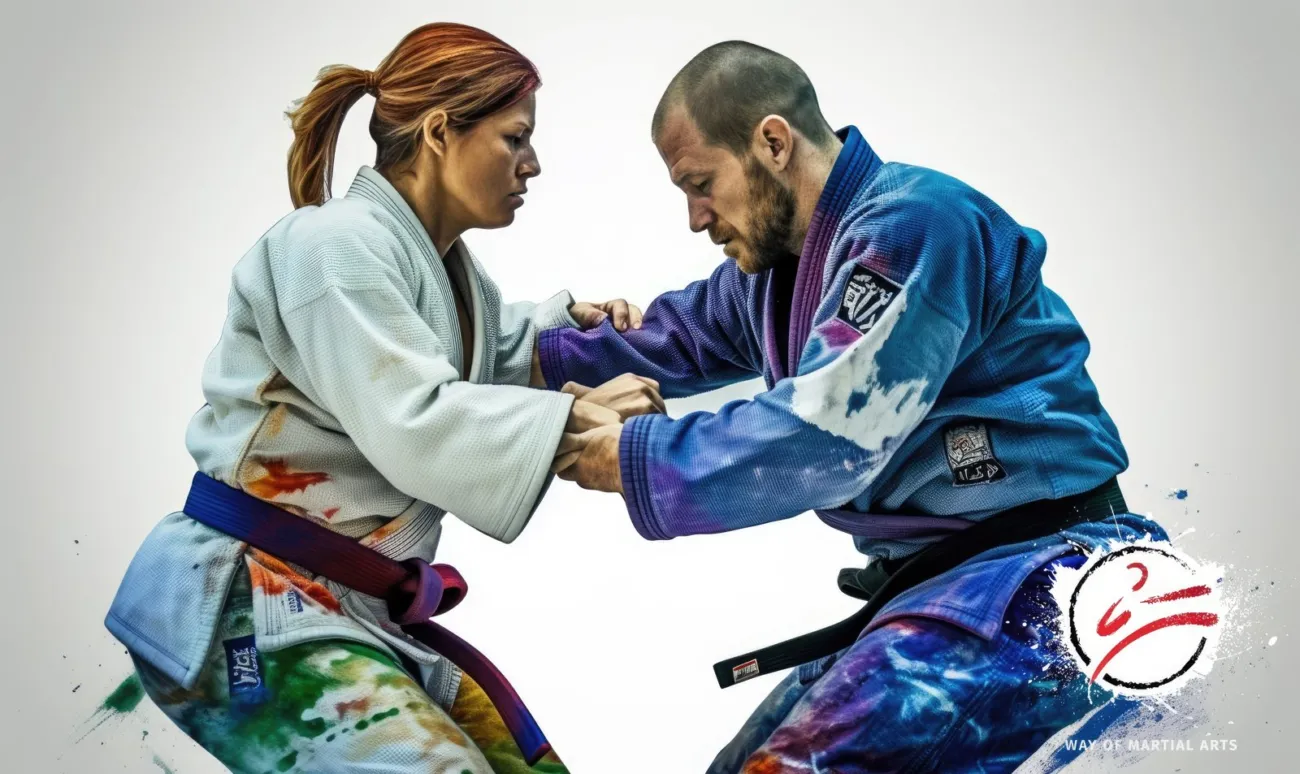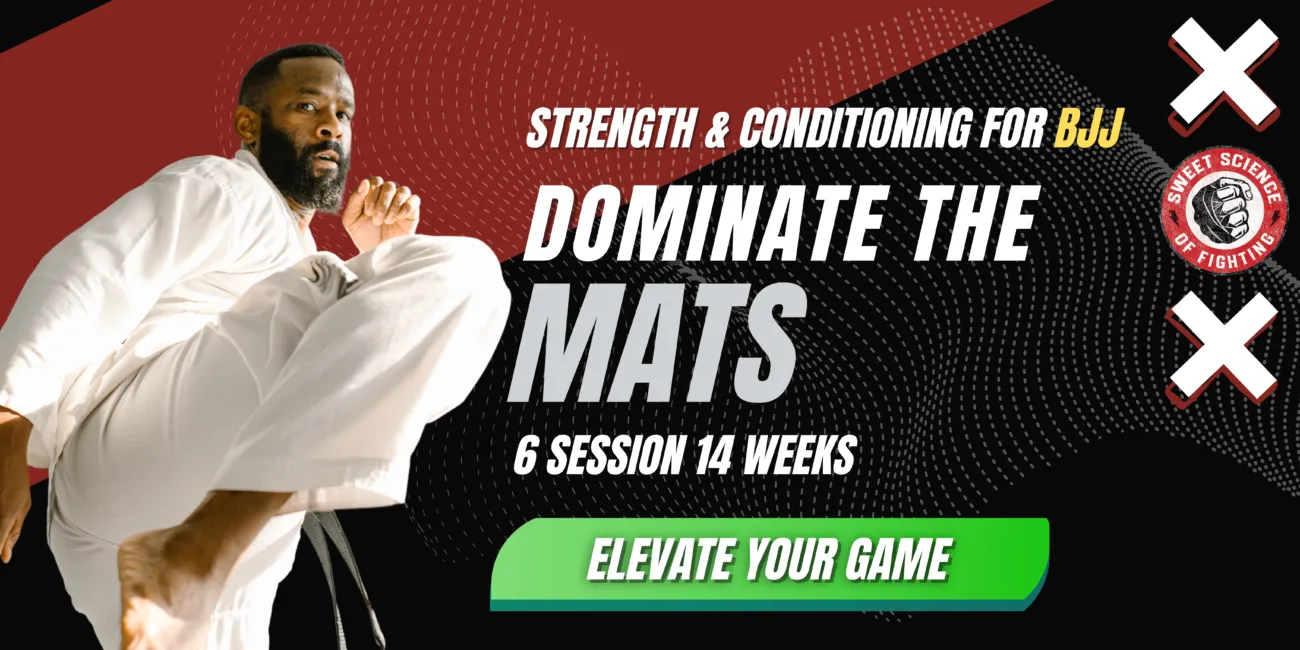Have you ever wondered about strength training for BJJ? Do you even think the best jiu-jitsu athletes participate in some of the most specific weight training sessions that push their skills to a new level?
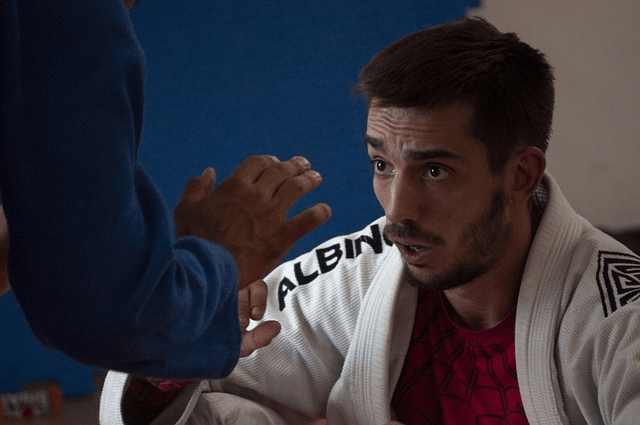
This article will inform you about the importance of strength training for BJJ and show how an average fighter can turn into the best Brazilian jiu-jitsu fighter with proper strength training exercises.
Remember, BJJ strength training programs make a difference when the two fighters are evenly matched. The benefits of good Brazilian jiu-jitsu strength training include improved performance, injury prevention, better flexibility and mobility, better transition and submission switch game, and much more. Please keep reading to learn how to push your BJJ performance to the next level and hop into the world of elite BJJ athletes!
What You Need For BJJ
First, you must work on specific features to reach the world of elite BJJ athletes. Have you ever seen a jiu-jitsu fighter with poor hip mobility and flexibility? No, and you will never see that, as BJJ practice is all about escaping and trapping your opponent with technique, which requires a lot of unorthodox, tricky moves.
The most important physical characteristics for BJJ fighters include high-level flexibility, superb muscular endurance, excellent upper-body strength, and outstanding hip mobility.
Plus, you mustn’t ignore cardio – when your gas tank is empty, it is empty, and you’ll become a sitting duck even with the best BJJ strength routine! Strength training for BJJ is more than just gym equipment and weight training – it combines the five features mentioned above!
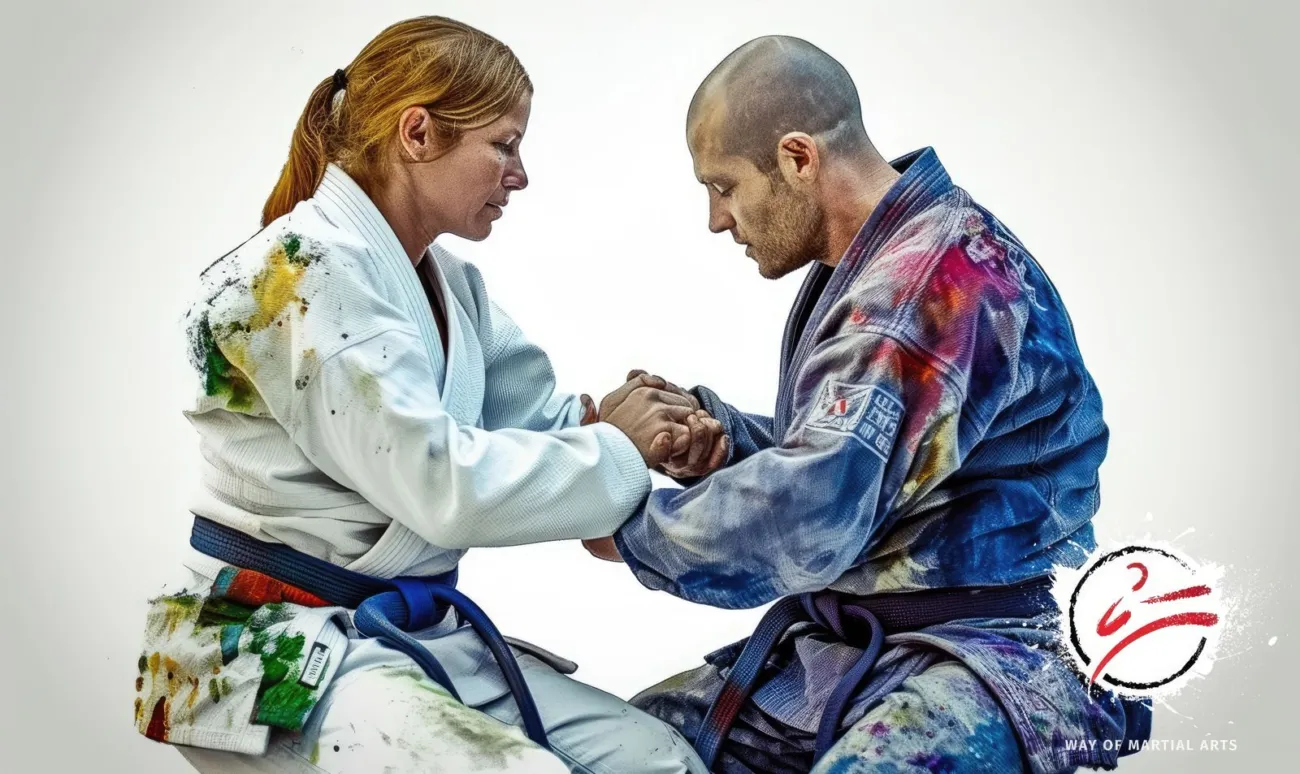
Mobility
BJJ practitioners will have difficulty if they don’t have good hip mobility. You can’t perform Gogoplata, triangle armbar, Eskima lock, and many other submission attempts with horrible hip flexibility.
Plus, rolling off the bottom and evading full guard is difficult with wrong workout sessions – you can push your hips forward all day and create space. Still, you won’t be able to perform a good reversal or a high-quality submission switch attempt with horrible lower body flexibility!
BJJ players must combine flexibility with strength development because they will meet evenly-matched opponents in the tournament. Stronger legs and more flexible hips give you more chances of winning the combat from the bottom.
Yoga exercises for BJJ are very beneficial – better mobility gives you more opportunities to evade or finish from the weirdest positions on the mat. Take a look at this video.
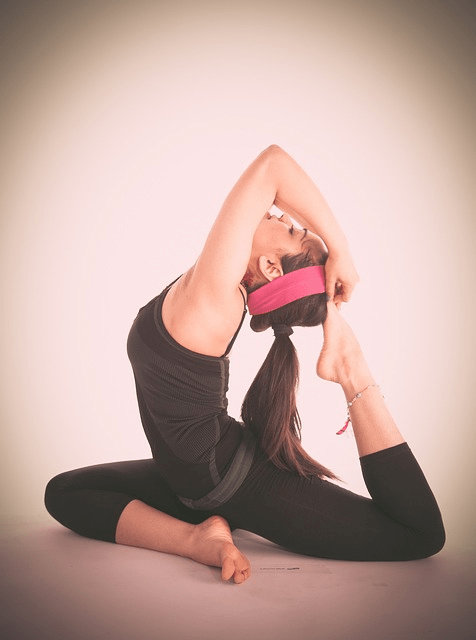
But let’s focus on the most important exercises, one by one, that might skyrocket your mobility in BJJ.
Please hold every position for at least 30 seconds or more (you can stretch with your partner too) because your goal is more flexibility and plastic, not elastic deformation. What does that mean? When you create a plastic deformation in your muscle, it will be more flexible next time, and you’ll be able to create greater amplitude and better BJJ strength.
It is very important to stretch the back of the hips, the lateral area of the hips, the adductors, and the front area. Please look at the video below, and here are the most important drills.
- Hamstring and calf stretch on the box – it helps you to wrap the legs around your opponent’s neck or shoulders when he traps you into the full mount;
- Knee-to-wall calf stretch – better calf and foot flexibility help you escape leg locks and calf slicer. Training BJJ for competition makes no sense without this drill;
- Box, standing, and kneeling hamstring stretch – Brazilian jiu-jitsu athletes known for flying submission attempts and reversals must have very flexible hamstrings to put their opponents in a bad spot;
- Lunge stretch and wall lunge – it is hard to control your opponent on the ground – believe it or not, your upper body doesn’t play a role here; you must have very flexible hips and good anticipation skills to stop his transition attempts;
- Hip external rotation – you must wrap your leg around the opponent’s to even think of a triangle or buggy choke, good external rotation gives you more chances to finish the bout;
- Pigeon stretch, seated hip rotation, and 90-90 seat – these are very specific areas of training for BJJ, which serve to help BJJ practitioners create a submission switch attempt – for example, the transition from triangle armbar to Omoplata or Tarikoplata is way easier with excellent mobility of your adductor muscles.
Stability
BJJ is all about constant movement and changing positions. For example, sometimes you might get stuck in somebody’s guard, trying to pass it. Or you can be on your back, trying to mask your jiu-jitsu performance with a feint, and end up on top of your opponent.
Every single drill that stabilizes the BJJ athlete pushes his training and potential hip escape and side control skills to the next level. Kettlebell and resistance band help you work on both stability and balance at the same time. Let’s focus on the most important drills for high-level BJJ routine (I also dare to say, for other grappling-related martial arts too):
- Upside-down kettlebell press – this is an excellent drill when you’re trying to transition from the bottom to the top position;
- Side-lying external rotations – when the opponent takes your back, you need to maneuver and improve your position, plus works well for upper body power too;
- Rear foot elevated split squat – it mixes balance and strength required for successful takedown offense in BJJ game;
- Turkish get-up – you will see this move many times in a BJJ fight; pay close attention, Turkish get-up works well for grappling strength and stability;
- Belt squat walks with the resistance band – one of the crucial drills for BJJ strength, especially for top control experts – lower body BJJ king.
Power Production
Explosive power greatly matters in BJJ, as this is the most efficient way to change your position or surprise the opponent with a hard-to-see attack. Power output differentiates between taking the back and ending up controlled by a body triangle.
Many exercises can help you in developing explosive power for BJJ. Still, we’ll try to focus on the ones that lead to the maximum effect for the martial arts-related specific training session.
Plyometric Exercises
Plyometric exercises are key to developing the power of your lower body. Explosive power is your first line of defense when fishing for hip escape or trying to bridge your way out of the bad spot.
The stretch-shortening cycle generates rapid, powerful pre-stretch or counter-movements where the muscles are loaded to reach optimum force in the fastest time possible. There is only one rule – as soon as you touch the floor and explode in the air, your contact with concrete has to be super short if your goal is developing power for BJJ!
Plyometric drills include box jumps, long jumps, clap push-ups, etc. But technically, you can turn every drill into a plyometric treasure if you can manipulate the stretch-shortening cycle. 🙂
Olympic Lifts
Olympic lifts will boost your power, speed, and explosivity, so your opponent will have difficulty clinching up with you. Yet, you will need the guidance of a coach, as these drills could cause a severe injury. Here are the most critical Olympic lifts for maximum BJJ strength:
- Power clean – it puts your whole body on fire;
- Dumbbell snatch – this drill helps you transition from defense to offense;
- Kettlebell swing – my favorite on the list of kettlebell swings is the kettlebell thruster, but any swing could boost your BJJ strength significantly.
IMPORTANT NOTE: some CrossFit drills are beneficial for BJJ sweeps and transitions, but don’t mix apples and oranges – they can’t help you boost your grip strength. Lifting weights is beneficial only when you do the drills properly!
Resistance Bands
A partner can hold you, or you can tie a resistance band to something, quickly change angles, and perform all kinds of BJJ moves. Once you start the next training jiu-jitsu, without a resistance band, you’ll feel like you’re flying!
Isometric Strength
There are tons of isometric moves in BJJ combat. For example, have you seen a fighter holding a submission in a starting position for a prolonged period while the opponent defends it? Better isometric strength leads to greater chances of finishing your opponent and better grip strength.
Also, you can do many modifications, but let’s focus on the most important BJJ isometric strength routine drills:
- TV watching – one of the best bodyweight drills stabilizes your whole body and works amazingly for top control; raise one hand from time to time, and you’ll get very similar moves to the ones in a BJJ combat;
Isometric squats – the best lower body drill for grapplers, especially for masters of top control;
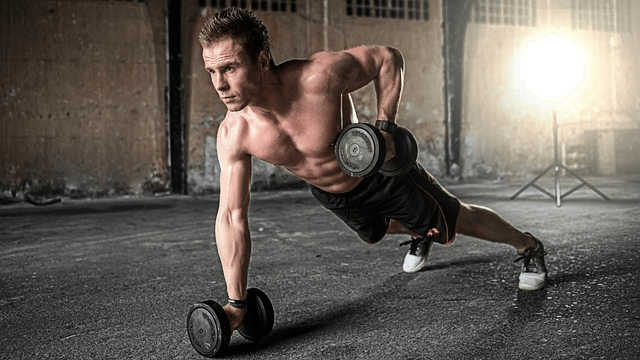
- Push-up holdout – there are many variations of these exercises, but all of them are superb for BJJ performance;
- Static pull-ups – reach above the level of the neckline and hold your position;
- Core stability drills – there are many static exercises for high-level performance, so this playlist might come in handy for the ones interested in excellent bodyweight training to boost your BJJ skills.
- Hold the choke – for example, you can hold D’Arce, triangle, rear-naked choke, or any other position – it is also a type of isometric BJJ training.
Strength Weighting For BJJ: Will They Be Effective?
Strength training for BJJ is critical when you meet an opponent with the same or nearly equal skill level and weight class because you will have greater chances of escaping bad spots and winning the fight. Both bodyweight strength training and barbell/dumbbell/kettlebell weight-lifting drills will make a difference in the competition. https://pubmed.ncbi.nlm.nih.gov/30247275/
Take a look at the research from Øvretveit, K, and Tøien, T.. You will notice that maximal strength training for BJJ, which consisted of pull-ups to failure, and bench press and squat at 85% of 1 RM (repetition maximum), three times per week, led to significant improvements in overall squat and bench press 1 RM values, rate of force development (RFD) and peak force (PF) in the squat jump, countermovement jump (CMJ) height, and muscular endurance of BJJ fighters.
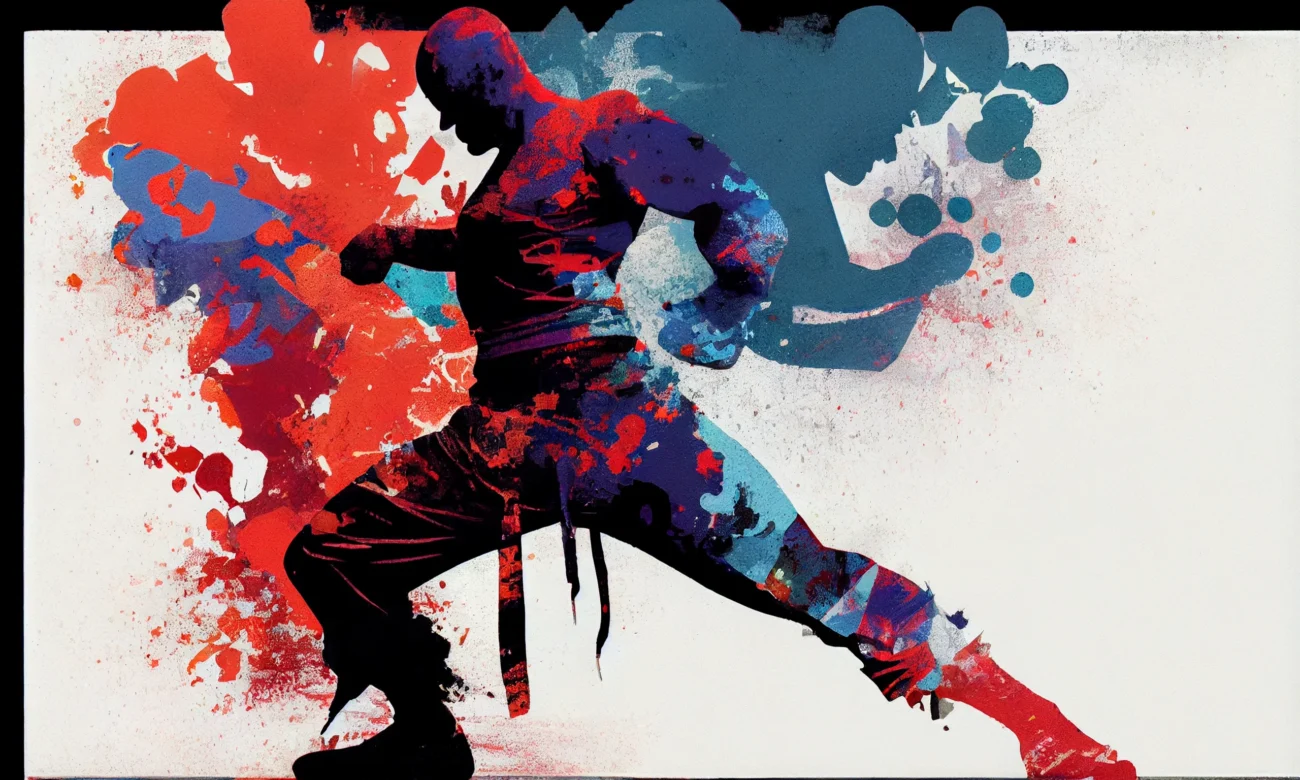
How to Mix Strength Training And BJJ
You must know that your BJJ skills are number one and adjust your training sessions towards your BJJ plans. Just forget about bodybuilding exercises, big biceps, or huge quads. You need to focus on improving muscular endurance, power, and overall strength and decreasing the muscular imbalances between the different areas of the body.
Try to train at least 2-3 times per week, but hire a coach if you can because you need to learn the technique properly in the first place.
If not, dedicate your workout sessions to your BJJ progress. Train at a maximum of 85-90% of one repetition when you boost strength. If you train muscular endurance, work on 50-60% of your 1 RM until failure. The ultimate goal is to build professional strength for maximum BJJ achievements in the competition.
As you push your skills to new heights with our recommended Jiu-jitsu Workout and strength training program, it’s crucial to equip yourself with proper gear that can match your dedication. Discover the Best BJJ Rash Guards that elevate your training to heroic levels and offer the comfort and performance you need to conquer the mat.
Strength Training For The BJJ Fighter
A successful strength training program for BJJ fighters must contain three important things – power production, muscular endurance, isometric strength training for BJJ, and improvement of weak areas (I’d kindly advise hiring a strength and conditioning specialist for this). Also, active recovery training matters; your body must rest properly, too, or you’ll risk overuse injuries.
Here is what a three-time per week strength training could look like:
Monday
Bench Press – 3 x 4-5 reps, 85% 1 RM, 2-3 mins rest between the sets
Squat – 3 x 4-5 reps, 85% 1 RM, 2-3 mins rest between the sets
Barbell row – 3 x 4-5 reps, 85% 1 RM, 2-3 mins rest between the sets
Pull-ups – 3 sets, 5-8 repetitions
Hanging leg raises – 3 sets, 15-20 repetitions;
TV watching – 2 minutes, 3 sets
Push-up holdout, down position – 1 minute, 3 sets
Sit-up holdout – 1 minute, 3 sets
Wednesday
Deadlift – 4 x 6 repetitions, 80-83% of 1 RM, 2 minutes rest between the sets
Push press – 4 x 6 repetitions, 80-83% of 1 RM, 2 minutes rest between the sets –
Behind the back shrug – 4 x 6 repetitions, 80-83% of 1 RM, 2 minutes rest between the sets –
Good mornings – 12-20 repetitions, 60-65% of 1 RM, one minute rest between the sets;
Core holdout exercises – choose 5-8 drills, and hold each position for one minute –
(don’t get confused by the name, these drills can work for BJJ strength too).
Friday
Kettlebell swings – 20 repetitions, 4 sets, 50% 1 RM, one minute rest between the sets;
Leg press – 20 repetitions, 4 sets, 50% 1 RM, one minute rest between the sets;
Leg extension – 20 repetitions, 4 sets, 50% 1 RM, one minute rest between the sets;
Grip strength training for BJJ – do these exercises at the end, hold for at least one minute; –
Core holdout exercises – choose 5-8 drills, hold each position for at least one minute; –
(don’t get confused by the name, these drills can work for BJJ strength too)
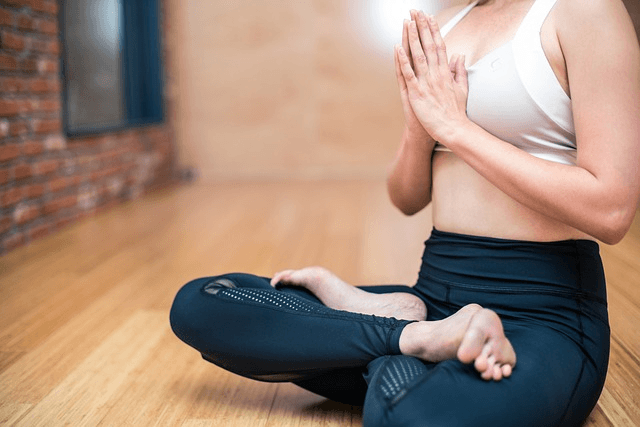
Improvement Season Program
A huge difference exists between improvement and competition season strength and conditioning programs for BJJ fighters.
The goal of the improvement season program is to create a stronger, more powerful fighter, while the competition season demands simultaneously working on strength, endurance, and quickness.
The priority of competition season is maintaining the power plus active recovery, while you can risk overuse injuries in the improvement season period. This period focuses on building overall strength and conditioning without many specific drills. In contrast, the focus shifts to preparing for the upcoming competition season tournaments.
Improvement season means more volume and different exercises, while the competition time means less volume and more specific, technical BJJ drills.
The periodization in strength training for BJJ matters a lot because you don’t want an exhausted fighter in the competition. You build maximum strength when no matches exist, and your training adjusts as the tournament closes.
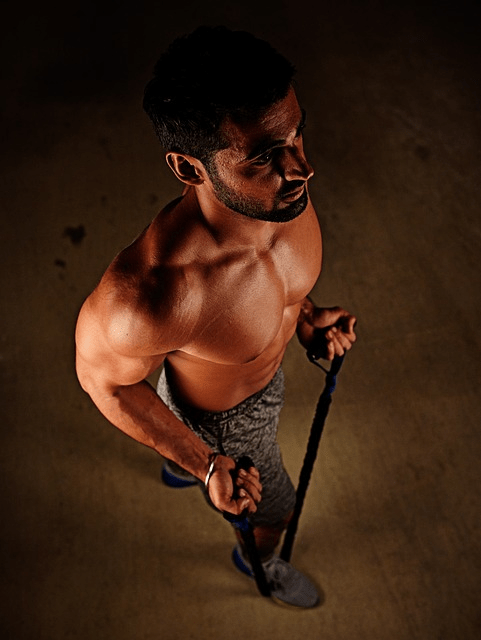
Competition Season Program
Depending on the competition schedule, you should have two or three weekly training sessions for strength. Make sure you aim for maximum power on Monday or Tuesday. Focus on endurance and more volume with smaller weights as you get close to the end of the week.
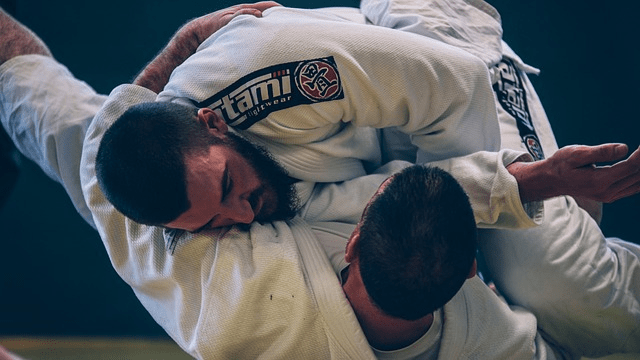
Remember, the focus shifts from building maximum strength and power to competitive workouts. More specific BJJ drills are required – for example, isometric strength, grip strength workouts, and exercises that boost BJJ power.
Do not push yourself too hard in the competitive period. You must avoid overtraining and unnecessary fatigue, active rest matters, and go to the spa or sauna if you have time. Here is the golden rule – decrease your training volume and maximal strength drills to taper the training properly in the weeks leading up to a significant competition.
Treat every injury seriously. If you have an injured spot, warm it up in the first place and make sure you use creams or whatever the doctor says to reduce pain and inflammation. For example, train your arms for maximum strength and conditioning when hurting your leg!
BJJ Exercises For Warming Up, Mobility, And Injury Prevention
The most used areas in BJJ combat are hips, spine, and shoulders, so most strength and conditioning exercises for mobility, warming up, and injury prevention should go in that direction. Of course, exceptions can happen when you have an injured spot.
Please don’t play games and warm up properly; it will significantly decrease the chances of an injury and boost your performance in the training or competition. These drills should target the most exposed areas during the BJJ fight – knee, shoulders, elbows, and spine.
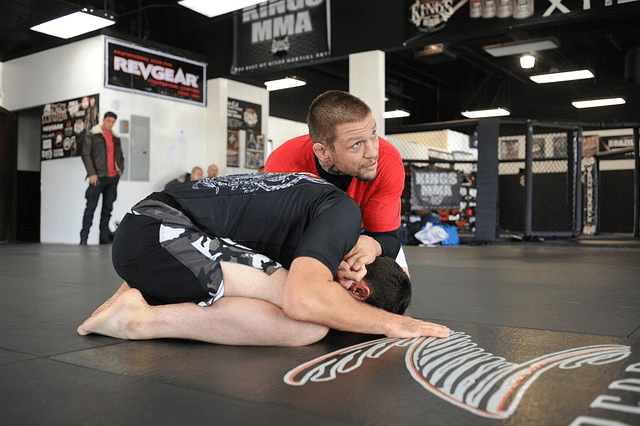
Here is an example of a BJJ strength and conditioning routine for a proper warm-up and injury prevention before the training session. Do these drills at a low-to-moderate intensity; a simple talk test can help – if you can speak normally but can’t sing, you’re doing an excellent job!
- Arm circles – 4 x 20 repetitions forward and backward;
- High knees – 4 x 20 repetitions;
- Butt kicks – 4 x 20 repetitions;
- Leg swings – 4 x 15 repetitions each leg;
- Standing hamstring stretch – hold the position for at least 20 seconds.
Floor Drills
- Hip openers – 20 repetitions on each side;
- Hip rotations – 15-20 reon ps each side;
- Hip extensions – 15-20 reps;
- Shrimps – 15-20 on each side;
- Glute bridges – 20 repetitions;
- Scapular push-ups – 3 sets, 20 repetitions;
- Rows with resistance band for your rotator cuff muscles (watch the whole video, you can add 2-3 drills, do at least three sets of 15-20 reps – https://www.youtube.com/watch?v=6u8QpNmQy_g);
- Back on your feet for the final warm-up phase – do 3 sets of 10 box jumps, three sets of 15-20 jump squats, and 3-5 sets of 10 clap push-ups. You can also do 3-5 pull-ups and three sets (if you have a neckline).
- Congrats, your body is ready to roll!
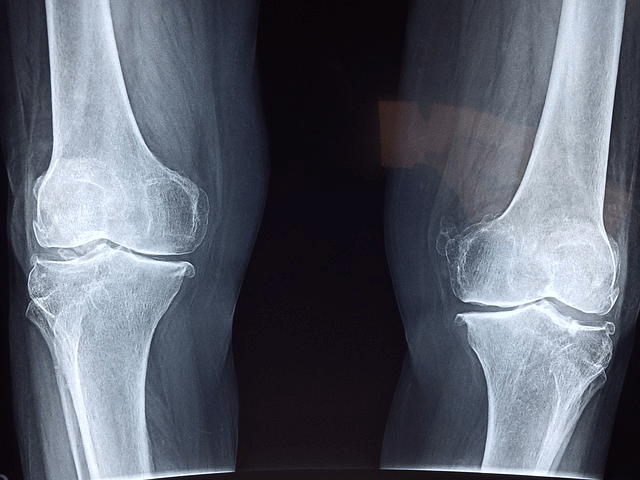
Please consult a strength and conditioning specialist before attempting an injury prevention routine or warm-up. You should learn the moves properly in the first place.
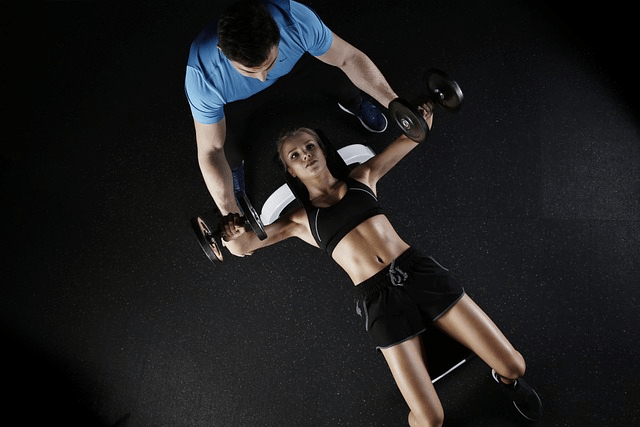
Structural Loading For Injury Prevention
The purpose of structural loading is to gradually build up your tissues and muscles and decrease the number of injuries.
When you gradually increase strength and conditioning demands, you are letting all areas of your body adapt and become more resilient to the training and competition.
A good example of structural loading in strength training can be seen in just one barbell row drill. In the first week, you can lift 10 pounds, but repeat the number of repetitions in week 2. As your body gets used to new impulses, you slowly gain weight in week 3.
Now let’s focus on BJJ-specific topics. Structural loading will work when you respect three principles – progressive resistance exercises, variation, and proper form. A good drill technique will ensure effective loading and activate fewer muscles. For example, proprioceptive drills can also help your structural loading, especially when recovering after an injury.
It is always better to consult a strength and conditioning specialist if you’re interested in a structural loading program tailored to the BJJ fighter’s needs.
Best Strength Training For BJJ
The most valuable complex exercises for the strength training of BJJ fighters are related to four main movement patterns – push, pull, squat, and hinge.
You should focus on multi-joint exercises that activate more muscle groups in the first part of your BJJ strength training in the gym, while you can manipulate with single-joint drills in the later stages of the workout. Multi-joint routines will target overall strength, power, and endurance, while single-joint exercises focus on local strength or correcting the specific BJJ-related issue.
It is critical to consult a strength and conditioning program expert because the proper technique matters, and you might hurt yourself.
Different exercises, number of sets and repetitions, and weights can skyrocket your BJJ performance if you do it properly. Training periodization and supplemental training matter too. Of course, specific exercises for BJJ are good ahead of the competition as they’ll make you quicker and more skillful.
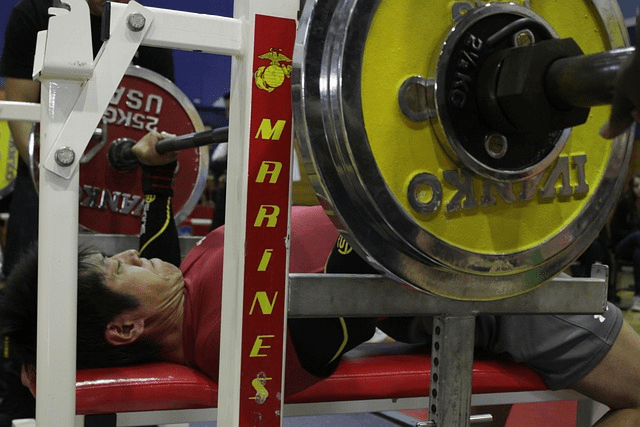
Push Exercise
The most crucial push drills for high-quality BJJ preparation are bench presses, overhead presses, and push-ups. While you shouldn’t do more than 20 push-ups per set, 4-6 sets, there is a different rule for the other two drills.
If you’re in a preparation phase, do 4-6 sets of bench or overhead presses at 85% of 1 RM, 4-6 repetitions. Yet, when you’re in a competitive period, try to stick to 12-20 repetitions at 50-60 percent of 1 RM; you don’t want big muscles – your goal is to maximize your jiu-jitsu performance.
Pull Exercise
Pull exercises (pull-ups, chin-ups, and rows) strengthen your back, which is essential when trying to dominate from side control or keep your opponent turtled.
You can use the same model for rows as bench presses. Regarding pull-ups and chin-ups, you have two options – 3-5 repetitions, 3+ sets (competitive period), or work until failure, 2 -4 sets (preparation period).
Squat
Back and front squats target the power of your quads and hamstrings, while goblet squat is a more specific exercise.
You can do 12-20 goblet squats per set and use the drill to boost your explosiveness and power. Regarding back and front squats, 4-6 repetitions in the preparation phase (4-6 sets at 85% of 1 RM) will make you stronger, while 12-20 reps in the competitive period boost your transition and sweep game.
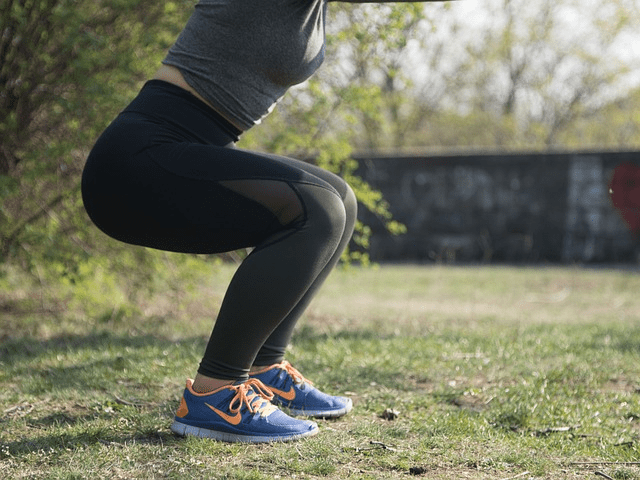
Hinge DrillsHip hinge movement matters in BJJ training because every fighter good off his back uses his hips to create space and finish his opponent. Good examples of hinge drills are deadlifts, kettlebell swings, and good mornings. While you can manipulate with weight in deadlifts, it is not recommended when you perform kettlebell swings and good mornings, as you can hurt yourself. Only do them with lightweight, but increase volume.
Power Lifts: Weight Training
The best multi-joint weight training drills for high-level BJJ performance contain bench presses, squats, deadlifts, and pull-ups. These drills can improve your overall levels of strength, power, and endurance, leading to better results on the mat.
Bench Press
The bench press is one of the best drills for upper body strength, specifically targeting your pectorals, triceps, and shoulders. The bench press is great for reversal attempts, especially when the opponent traps you into side control.
Squats
This drill increases lower body strength and power, which is very useful when you transition or control the opponent on top.
Deadlifts
Superb drill activates your legs, glutes, back, quads, and shoulders. But hire a strength and conditioning pro because the proper technique is a bit harder; you don’t want to hurt yourself.
Pull-Ups
Pull-ups and chin-ups will help with upper body power and grip strength, essential in gi combat. The fighter with a better grip will have a greater chance of finishing the bout in the competition.
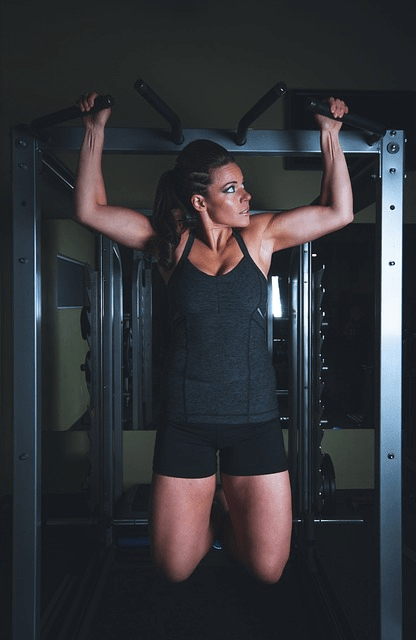
You should combine different numbers of sets and repetitions and weights for the maximum result on the mats. Periodization matters, too, because you can’t push too hard in the competitive period – you don’t want to look tired in the competition.
A good strength training program for BJJ combines different drills and muscle groups!
Frequently Asked Questions About Jiu-jitsu Workout
Is Jiu-Jitsu a full-body workout?
Of course, it is; your whole body is on fire when you roll with a skillful opponent on the canvas.
How does BJJ change your body?
BJJ mostly improves your body’s muscular endurance and isometric strength, but it will not turn you into a muscle mountain.
Can you lift weights and train BJJ?
Yes, but you mustn’t affect your BJJ schedule; weights will help you if and only if you use them properly. Adjust your weight-lifting training program towards your BJJ training routines.
Is strength training good for Jiu-Jitsu?
It will make a difference when the two fighters with the same skill set square off.
How many times a week should I strength train for BJJ?
Two or three times per week in the season. If you’re in a pre-season period, your strength training program should contain 3+ sessions per week.
What muscles should I train for Jiu-Jitsu?
The main exercises should focus on the quads, back, chest, core, and arms. You should train your whole body because every muscle will work during heavy rolls, transitions, and submission switch attempts.
